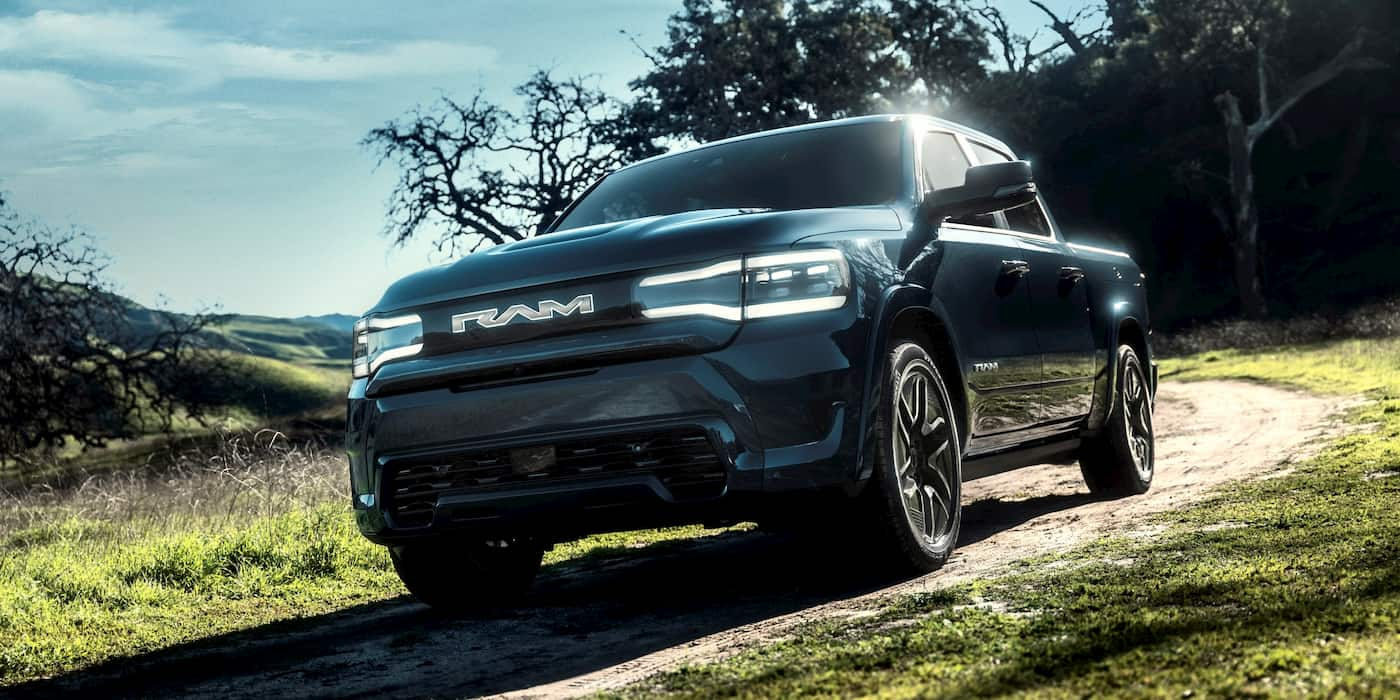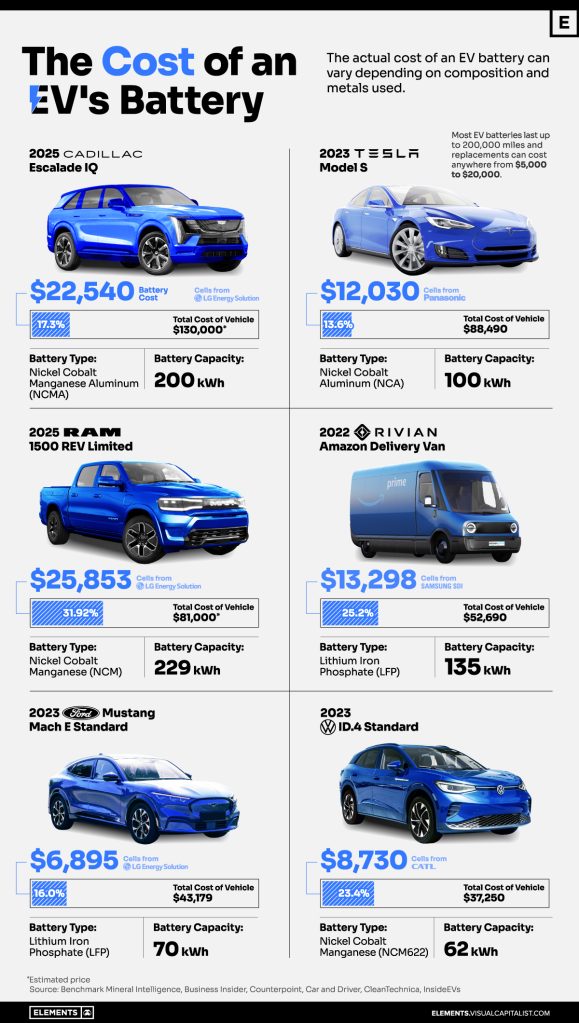
According to data put together by Visual Capitalist, the cost of replacing your next-gen RAM 1500 REV’s battery could exceed $25,000 in components alone. Based on information from Benchmark Minerals Intelligence, VC put together a cost estimate comparison of various EV batteries. The RAM 1500 REV’s massive top-tier 229kWh pack was the most expensive by a considerable margin, at $25,853 — within spitting distance of a brand-new Prius ($27,650). As Snoop Dogg so eloquently put it: Pay the cost to be the boss.
But really, this isn’t about what it might cost to replace a battery down the road, it’s about the cost of super-massive car batteries overall. At 229kWh, that’s almost four VW ID.4 batteries (62kWh) in a single vehicle. There’s growing discussion about at just what point EV battery capacity becomes wasteful from the perspective of materials used to construct a single vehicle, and the RAM REV certainly makes for a good conversation starter there.

With its nickel cobalt manganese (NCM) chemistry, the RAM REV’s battery is squarely in the middle of cost per-kWh, too, splitting the difference between premium NCA (nickel cobalt aluminum) and more affordable LFP (lithium iron phosphate) cells.
Given the roles a truck like the RAM 1500 REV is going to be expected to fulfill, there are some pretty big engineering challenges to delivering the full range of capability and capacity expected of a pickup on an electrified platform. Ford’s F-150 Lightning has struggled to move units, and the recently unveiled Flash trim was a direct response to customers who balked at the 230-mile range of the entry-level battery and the high price of premium Lariat and Platinum models. Still, even with the larger 131kWh battery, the Lightning has repeatedly managed just 100 miles of total laden towing range in independent testing. Rivian’s R1T has fared no better (though the new R1T Max will certainly improve on total towing distance).
RAM is absolutely watching the early entries into this space, and it has already claimed best-in-class total payload rating for an EV pickup, at 14,000 pounds. With its uber-massive battery, it’s also likely to deliver the best overall towing range of anything in the space for now, with a full 49kWh of capacity above and beyond the just-launched R1T Max. As was often said in the ICE heyday of the 1960s, “there’s no replacement for displacement,” and when it comes to electric pickups, there’s probably no real replacement for battery capacity right now.
Electrek’s Take
Believe VC’s estimate in its precision or not, if it’s even in the ballpark, that’s a tremendous amount of vehicle cost apportioned to a battery. And there’s no denying the math: You could build three or even four “mainstream” electric cars using the same amount of battery cells as a single RAM 1500 REV. And maybe five or six “city car” EVs!
The RAM will not be the first or the last electric vehicle to use a massive battery pack, and it’s only singled out here because, for now, it sits at the very top of all consumer EVs for battery size (the next closest would be its brand stablemate, the Hummer EV, at 212kWh usable).
As battery chemistry advances and the use of lightweight composites grows, electric pickup trucks will undoubtedly benefit. But at the moment, it does feel a bit like their wasteful reputation will live on to some extent, even in the electrified era.
